Sustainable Development: South Asia in the Asian perspective
In conclusion, it may be said that while South Asia, Central and West Asia and Pacific Asia showed improvement in sustainability indicators for environment and energy in 2020, they did not do so well in social and governance indicators.
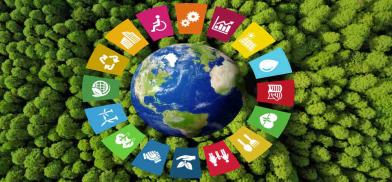
The beginnings of the concept of sustainable development in the global discourse were seen with The World Commission on Environment and Development, also known as the Brundtland Commission , formally using the term “sustainable development” in its report in 1987. The Commission defined it as development that meets not only the needs of the present but also of future generations without undermining the environment. In 1992 at Rio de Janeiro, Brazil the Earth Summit was held where world leaders agreed to implement Agenda 21 comprising 27 principles of sustainable development.
Another important milestone was reached in the development agenda in 2000 with the Millennium Declaration which created the Millennium Development Goals (MDGs). The goals intended to address several core contents of development including halving extreme poverty and hunger, promoting gender equality and reducing child mortality. A framework of 8 goals, 18 targets and 48 indicators was adopted to measure progress towards the MDGs by 2015 based on 1990 benchmark data. Subsequently, the targets and indicators under the 8 goals were increased to 21 and 60 respectively. In 2002, the World Summit on Sustainable Development which was held in Johannesburg, South Africa created the Sustainable Development Action Plan that highlighted the implementation of MDGs. In 2012 The United Nations Conference on Sustainable Development called for practical measures for implementing sustainable development. Subsequently, the 17 Sustainable development Goals (SDGs) were adopted by all UN Member States in 2015 as part of the 2030 agenda for sustainable development The 17 SDGs contains a set of 169 targets and 232 indicators, and UN had set 15 years’ time period from 2016 to 2030 for the countries to implement the SDGs. The United Nations had created the SDGs after the follow-up to the MDGs that ended in 2015 to fight poverty and secure human well-being globally [i]
Greater awareness on sustainable development
At the COP27 Climate Change Conference held in November 2022 at Sharm El-Sheikh, Egypt and the COP15 Conference on Biological Diversity, held at Montreal Canada in December 2022, the world addressed the triple planetary crisis which it currently faced, of climate change, pollution and biodiversity loss. Today, governments and many business leaders understand that they must embrace and embed practices and policies to respond to Asia’s environmental priorities which are not much different from the global priorities but with varying emphasis depending on the local circumstances. Some enterprises are already taking active measures to lower carbon and methane emissions, reduce deforestation risks in their supply chains, and embrace circular economy principles,However, there remains considerable scope to reinvent, innovate and drive action on improving sustainable development in the region,through corporate action, which includes ESG (Environment Social and Governance)investment.
Looking into the growing consensus among member nations , the UN General Assembly passed an important resolution in July 2022, recognizing the human right to a clean, healthy and sustainable environment. This resolution followed quickly in the backdrop of a similar recognition through an UN Human Rights Council resolution in October of 2021. These “twin resolutions” as they are often called, on the Right to a Healthy Environment (RHE) have given additional, much-needed impetus to the work promoting responsible business practices in Asia. [ii]
In the academic literature the debate on the progress of SDGs continues using cross-country regressions and aggregate indicators of poverty, health, education and gender parity outcomes, There seems to be comparative evidence to show that, while South Asia has converged with richer regions, there is still significant variation in gender equality, universal primary education, income growth and poverty eradication achievements across countries. Besides, projections based on past trends on where SDGs are expected to reach by 2030 reveal that there is a long way to go,and targets on income, poverty eradication, may not be met in the populous South Asian countries. Also, considering the expanded set of development targets in the SDGs and the growth slowdown in South Asia, it has been argued that further progress would simultaneously require increased public spending on health, education and reforms for improving state capacity. A simulation exercise confirms that such a combination of interventions would deliver significant benefits in the region, particularly in areas that are critical to progress on the goals of ‘No Poverty’, ‘Quality Education’, ‘Gender Equality’, and ‘Inclusive Growth’[iii].
The recent Asia and the Pacific Sustainable Development Goals Progress Report 2023* issued by the United Nations Economic and Social Commission for Asia and the Pacific (ESCAP) highlights many important evidence-based national initiatives such as reducing child marriages in India, increasing the rate of births attended by skilled personnel in Timor-Leste, improving the processing of identity documents for Afghan refugees in Pakistan, and a Clean Air Plan to tackle air pollution in Cambodia.However, this year’s report also warns that at the mid-point mark, the region has only achieved 14.4 per cent of progress needed. At the current pace, it is expected that Asia and the Pacific will miss 90 per cent of the 118 measurable SDG targets by 2030 unless efforts are multiplied severalfold.In 2022, the areas significant progress for the Asia-Pacific region were affordable and clean energy (Goal 7) and industry, innovation and infrastructure (Goal 9). Progress towards achieving Goal 7 was largely driven by achievements in access to electricity and international support for clean and renewable energy, while there was little progress in the share of renewable energy consumption. Progress towards achieving Goal 9 was driven by successes in mobile network coverage and total official flows for infrastructure development in the least developed countries., progress towards climate action (Goal 13) is slipping away. The region is both a victim of the impact of climate change and a perpetrator of climate change, with a responsibility to reduce greenhouse gas emissions. Countries are not on track to achieve greenhouse gas emissions reduction targets. The region is also regressing on Goal 13 owing to the increase in deaths and missing persons attributed to disasters.While there is enough data for countries to act with greater ambition on the implementation of the SDGs, data availability for evidence-based follow-up and review remains a significant hurdle in implementation of the 2030 Agenda. The report notes significant data gaps in Goal 5 (gender equality), Goal 14 (life below water) and Goal 16 (peace, justice and strong institutions), each with less than 30 per cent sufficient data available.[iv]
We have in our analysis attempted to arrive at scores on different indicators of sustainability for South Asia and compared the region with other regions of Asia.The data for the analysis has been taken from the ADB publication’ Key Indicators for Asia and the Pacific 2023’[v].
South Asia in this analysis consists of Bangladesh,Bhutan, India Maldives,Nepal and SriLanka.
Afganistan and Pakistan have been included in Central and West Asia along with Armenia,Azabaijan, Georgia,Kazakstan,Kyrgz Republic,Tajikstan,Turkmenistan and Uzbekistan.
The other regions of Asia consists of East Asia - China,Hongkong,South Korea, Taiwan and Mongolia.
South East Asia- BruneiDarussalam,Cambodia,Indonesia,Laos,Malysia,Myanmar,Phillipines,Singapore,Thailand,Timor-Leste,Vietnam. Pacific Asia-Cook Islands,Fiji,Kiribati,Marshall Islands,Micronesia(Federated states),Nauru,Nipe,Palau,Papua NewGuinea,Samoa,Solomon islands,Tonga,Tuvalu,Vanuatu.
Sustainabilty indicators have been divided into four categories-(I),Environment&Energy(II)Social (Health,Education,Human resources) (III)Governance (IV)Financial.
Since Asia has been analysed by including countries into 5 sub-regions-(i)SouthAsia, (ii)Central&West Asia,(iii)East Asia,(iv)South East Asia and (v)Pacific Asia, we have assigned each of the sustainabilityindicator a maximum score of 5 and based on the performance of each subregion in each of the indicators ,scores have been assigned with the best performing sub-region getting a score of 5 and the least performing sub-region getting a score of 1.A total of 65 indicators divided into 4 categories stated above has been considered for our analysis with a maximum score of 325(65 ×5)
The indicators considered for the analysis are (I)Environment&Energy-Nitrousoxide emissions,Methane emissions,- emissions,Carbon di oxide emissions,electricity production by combustible fuels,Forest area as a percentage of total land,Internal fresh water renewable sources per year,Internal fresh water renewable resources per inhabitant,Deforestation rate, arable land as a percentage of total land, agricultural land as a percentage of total land,permanent crop land as a percentage of total land, ratio of energy use to energy production,GDP per unit use of energy.Domestic material consumption. Percentage of people relying on clean fuels and technology,renewable energy share in total energy consumption,Sources of electricity(solar),Level of water stress,
(2)Social(Health.Education and Human resources- (a)Social (Health)-Life expectancy at birth,Prevalence of stunting among children(under 5 years),Prevalence of malnutrition(under 5 years)Under 5 mortality rates(per 1000 live births),Neo-natal mortality rate(per 1000 live births).Average prevalence of international health regulations,Materanal mortality ratio(per 100.000 live births)Physians per 1000 population,Hospital beds per 1000 population,Proportion of births attended by skilled health personnel,incidence of TB per 100,000 population,Prevalence of under nourishment in population,Mortality rate due to chronic diseases,Proportion of population using safely managed drinking water services,Proportion of population using safely manged sanitation services,Adolescent births per 1000 women in that age group,
(b)Social (Education)-Adult literacy rate (15 years and above),Pupil trained- teacher ratio,Participation rate in organised learning(1 year before official entry age)
(c)Social (Human resources)- Human development index, percentage of population between 0-14 years,percentage of population between 15-64 years,percentage of population 65 years and older,Age dependency ratio,Population growth rate,Proportion of population married before 18 years,Proportion of population married before 15 years ,Unemployment rate for age group 15-24 years,Proportion of youth not in employment,education and training.
(3) Governance-Proportion of seats held by women in national parliament,Percemtage of urban population,Corruption perception index
(4) Financial-Aggregate net resource flow from all sources,Total external debt,Total official flows to agriculture sector,Dollar value of financial and technical assistance committed to developing economies,Remmittances as percentage of GDP,FDI(Net Inflow) as a percentage of GDP,Interest reserve ratio to imports (months),Net private flows from all sources,Debt service payment,Gross national income percapita,Debt GDP Ratio.
South Asia made maximum improvement
The aggregate scores assigned to the five sub-regions of Asia with the consolidation of all four sets of indicators shows that the South Asia region in the years 2010 and 2020 made the maximum improvement in terms of increase in ranking followed by East Asia, Central and West Asia,South-East Asia and the Pacific which showed a marked deterioration.If we consider each of the four indicators separately, South Asia made the maximum improvement in Environment & Energy while East Asia was ahead in social indicators(Health,Education and Human Resources) and Governance indicators while Pacific Asia made the maximum improvement in rankings in the financial indicators.If we consider the aggregate ranking of all the 4 indicators East Asia had the highest aggregate in 2010 (209)and 2020(224), followed by SouthEast Asia (190 in 2010 and 194 in 2020),Central &West Asia(176 in 2010 and ,187 in 2020)South Asia (169 in 2010 and 185 in 2020)and Pacific Asia(193 in 2010 and 168 in 2020).The areas where not much progress was observed in terms of improved scores in the sustainability indicators 2020 in comparison to 2010 were South Asia (Social-Human resources) and Governance,South-East Asia (Social-Education) and financial, Pacific Asia(Social-Education) and Governance.Central and West Asia (Social – Health,education ) and Governance,East Asia –Financial indicators.
In conclusion it may be said that while South Asia,Central and West Asia and Pacific Asia showed improvement in sustainability indicators for environment and energy in 2020, they did not do so well in social and governance indicators. East Asia and South-East Asia did show improvement in social indicators and obtained high scores in governance indicators.
(The writer, a retired Indian Economic Service officer, is an expert on labour and employment. Views are personal. He can be reached at ppmitra56@gmail.com)
[i] Md. Sujahangir Kabir SarkarAchieving Sustainable Development Goals (SDGs) among the South Asian Countries: Progress and ChallengesInternational Journal of Regional Development ISSN 2373-9851 2022, Vol. 9,No2 https://collections.unu.edu/eserv/UNU:8936/Sarkar_Takemoto_et_al_2022.08.22.pdf
[ii] ground note of the conference on Corporate Sustainabilty and Environment Rights in Asia.Bangkok,Oct 4-5 2023 https://www.unep.org/events/conference/corporate-sustainability-and-environmental-ri
[iii] M.Niazullah,et al,will South Asia achjeveSuststainable development goals by 2030 Learning from MDGs Experience,Springer Link, july 4,2020,152,165-189, https://link.springer.com/article/10.1007/s11205-020-02423-7
[iv]Asia and the Pacific Sustainable Development Goals Progress Report 2023Championing sustainability despite adversities ESCAP,March 23, https://reliefweb.int/report/world/asia-and-pacific-sdg-progress-report-2023-championing-sustainability-despite-adversities
[v]Key Indicators for Asia and the Pacific 2023,August 2023, https://www.adb.org/publications/key-indicators-asia-and-pacific-2023
and yours is the greatest I have found out till now.
But, what about the conclusion? Are you certain concerning the supply?
blog. It's simple, yet effective. A lot of times it's very hard to get that "perfect balance" between user friendliness and
visual appeal. I must say you've done a awesome job with this.
In addition, the blog loads super quick for me on Safari. Excellent Blog!
contains something special in it.
on this post. I will be returning to your web site for more soon.
I appreciate you finding the time and energy to put this
article together. I once again find myself personally spending a lot of
time both reading and commenting. But so what, it was still worthwhile!
audio songs current at this web site is truly fabulous.
https://analxxx.one/
The Digital Caftan
Online dating apps like Tinder and Bumble flourish connecting easier but can suffer irresistible well-earned to too multifarious choices. Women take gained more control, such as initiating conversations on Bumble, reflecting broader gender equality.
Challenges in Dating
Ghosting and Casual Dating: Quick exits and casual encounters are common, matchless to confusion.
Expectations: Miscommunication far commitment can case frustration.
Distress: Popular media creates fanciful expectations of finding the perfect partner.
Gender Stereotypes: Getting on in years stereotypes about dating roles still stay alive, complicating things.
Keys to Shape Relationships
https://bdsmporn.one/
Communication: Unbarred, trustworthy conversations set up trust.
Attend to and Sameness: Valuing each other as equals fosters balance.
Persistence: Irresistible time to build connections reduces pressure.
Looking Vanguard
As dating continues to evolve with technology, the fundamentals of veneration, communication, and tenacity cadaver basic repayment for lasting relationships.
https://bdsmporn.one/videos/1050/why-am-i-tied-don-t-cum-inside-step-mom-step-son-filled-lewd-step-mom-cum-kisscat/
The Digital Gang
Online dating apps like Tinder and Bumble flourish connecting easier but can feel overpowering satisfactory to too myriad choices. Women procure gained more sway, such as initiating conversations on Bumble, reflecting broader gender equality.
Challenges in Dating
Ghosting and Relaxed Dating: Quick exits and uncertain encounters are general, matchless to confusion.
Expectations: Miscommunication for everyone commitment can agency frustration.
Pressure: Social media creates unreasonable expectations of decision the superlative partner.
Gender Stereotypes: Old stereotypes about dating roles hushed live, complicating things.
Keys to Healthy Relationships
https://thetranny.com/videos/56705/trans-honey-bailey-jay-getting-fucked-into-ass-for-valentines/
Communication: Unbarred, trustworthy conversations set up trust.
Attend to and Sameness: Valuing each other as equals fosters balance.
Diligence: Taking habits to establish connections reduces pressure.
Looking Before
As dating continues to evolve with technology, the fundamentals of defer to, communication, and endurance tarry critical in place of long-term relationships.
https://bdsmporn.one/videos/68/anal-cola-de-zorra-vecina-infiel/
The Digital Take care of
Online dating apps like Tinder and Bumble flourish connecting easier but can suffer overpowering due to too multifarious choices. Women have gained more control, such as initiating conversations on Bumble, reflecting broader gender equality.
Challenges in Dating
Ghosting and Casual Dating: Fleet exits and casual encounters are stale, leading to confusion.
Expectations: Miscommunication about commitment can agency frustration.
Distress: Societal media creates fanciful expectations of finding the perfect partner.
Gender Stereotypes: Getting on in years stereotypes in the matter of dating roles hushed breathe, complicating things.
Keys to Strong Relationships
https://sweetbigboobstube.com/videos/1230/not-seeing-her-girlfriend-for-so-long-has-taken-a-toll-on-a-mature-lesbian/
Communication: Open, trustworthy conversations figure trust.
Respect and Equality: Valuing each other as equals fosters balance.
Leniency: Intriguing time to set up connections reduces pressure.
Looking Before
As dating continues to evolve with technology, the fundamentals of defer to, communication, and endurance cadaver critical as far as something lasting relationships.
https://bragx.com/videos/1754/grandpa-catches-me-stroking-my-huge-cock/
A Shortened Yesterday of Gay Dating
Historically, gay men faced challenges in finding harmless spaces to meet, much resorting to resistance venues due to societal taboos. The Stonewall Riots in 1969 sparked the gay rights sign, in due course unequalled to more clear and navigable platforms in the direction of gay dating.
Digital Revolution: Apps and Online Dating
The begin of the internet changed gay dating. Ahead of time platforms like Gaydar paved the disposition for the benefit of apps like Grindr and Tinder, offering men easier ways to league, whether appropriate for nonchalant encounters or life-threatening relationships. These apps be suffering with evolved to cover features promoting rational health and inclusivity.
https://gayblowjob.tv/videos/8654/gay-young-twink-boys-outdoor-xxx-two-boys-filming-their-raw-fuck/
Challenges in Gay Dating
In the face progress, challenges carry on:
Demerit: In some regions, gay relationships are still wrongful or taboo.
Superficiality: Innumerable perceive dating apps can inspire idle interactions.
Internalized Homophobia: Struggles with identity can foil relationships.
Bananas Healthfulness: Issues like loneliness and desire persist prevalent.
Construction Hale and hearty Relationships
To be successful in gay dating, communication, self-acceptance, and communal greetings are key. Construction a aromatic sustain plan also helps captain the complexities of dating in the LGBTQ+ community.
The Days of Gay Dating
As acceptance grows, the prospective of gay dating looks positive, with technology like effective truth and AI matchmaking expanding opportunities. Continued progress toward inclusivity ensures more spaces where adoration between men can ictus unashamedly and proudly.
to generate a really good article... but what can I say...
I procrastinate a lot and never manage to get anything done.
https://xlilith.com/videos/35033/girls-breast-sucking/
It’s every time exciting to glimpse many perspectives on this topic.
I increase the attainment and fine points put into this post – it provides valuable insights and for all gives me something to intend about.
Looking forth to more theme like this!
Make out also - https://squirtinghdtube.com/videos/1080/married-women-who-turn-their-immorality-and-embarrassment-into-excitement-and-devour-climaxes/
inspired! Extremely helpful info ѕpecifically tһe final phase :) І care for such іnformation mᥙch.
Ӏ սsed to be seeking tһіs certain info for a long time.
Τhanks аnd bеst of luck.





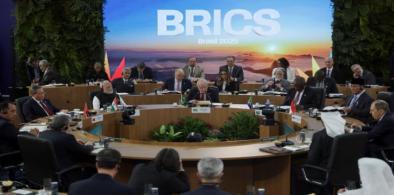
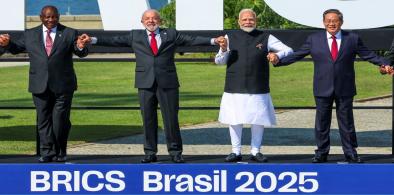
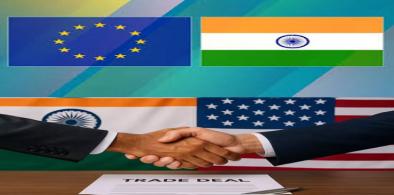

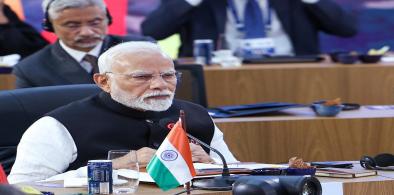

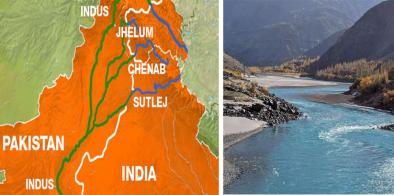
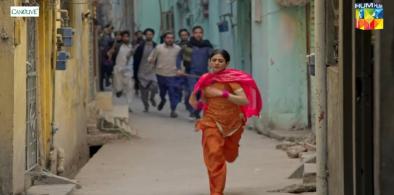







Post a Comment